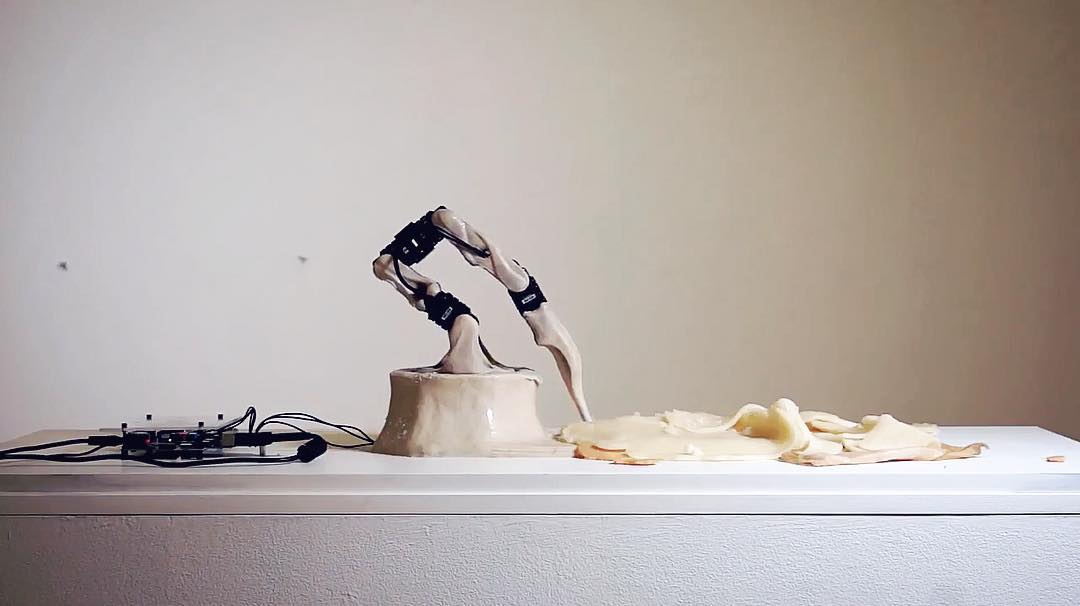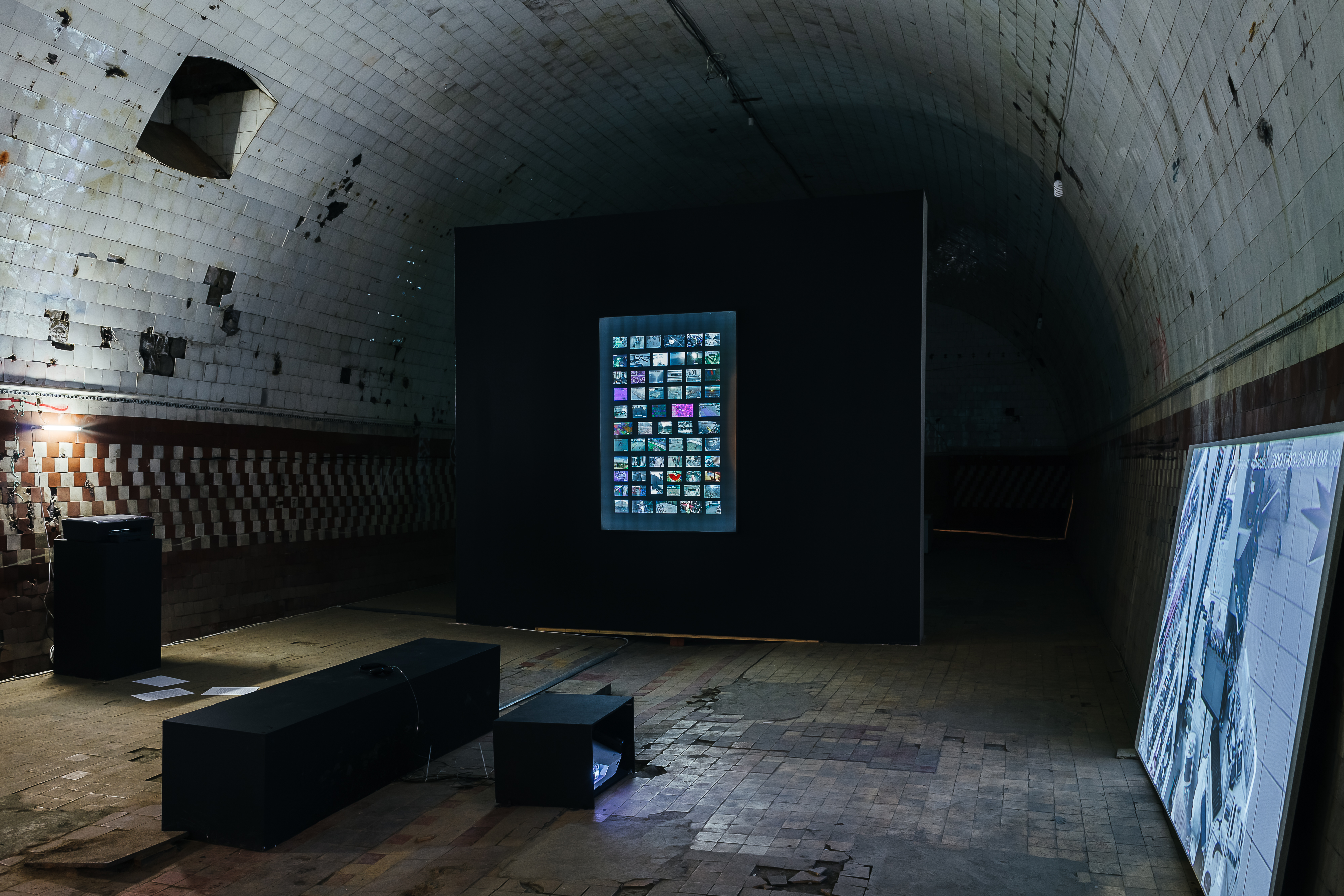Powered by AI: artistic investigations in the early XXI century
Natalia Fuchs
Art work has a full scope of meanings. But without the participation of the viewer, there is no history in it.
Anish Kapur
Technology have long been considered one of the main mechanisms for freeing resources for humans. Technology provide us with greater opportunities in working with information, production and economics. Of course, technology affects our ability to create art. Artists are always at first here to react to the world of accelerating changes and the rapid introduction of technologies. New artistic environments, such as artificial intelligence now, give rise to new forms of self-expression. Artificial intelligence is deeply associated with a symbiotic fusion of man and machine to create new realities. In fact, modern advances in the field of artificial intelligence challenge the very definition of what it means to be an artist in the XXI century: the creation of art is no longer an exclusive privilege for humans, and the role of the artist in modern culture acquires new contexts.
Today, technology expands the boundaries of creativity and sensory experience. “Amygdala” (2018) is an artificially intelligent (AI) robot in the form of a human-like limb created by Berlin-based Italian artist Marco Donnarumma in collaboration with Neurobotics Research Laboratory and Ana Rajcevic Studio. The result of several iterations spanning 3 years of research, disturbing and yet sensual, Amygdala’s shape is that of a human-machine hybrid from a not-too-distant future. Amygdala’s only skill is to learn how to perform rituals of cleanliness. By training on its own body, the robot teaches itself the cognitive and physical discipline required to perform a particular ritual. In a previous performance “Corpus Nil” (2016) Marco performed a ritual of birth where he has modified his own body on stage by interacting with an AI software. Within Amygdala the software becomes embodied in the process of purification.
 Courtesy of Marco Donnarumma
Courtesy of Marco Donnarumma
It should be noted that creativity and artistic expression until a certain time were considered peculiarities incompatible with the capabilities of computer intelligence. One of the most important criticisms about artificial intelligence for a long time was that he lacked the ability to “imagine” and “think” outside of the code created by man. But now it’s not quite like that. “Power Struggle” (2011), interactive installation created by Paris-based Russian artist Olga Kisseleva, analyzes the behavior of early forms of artificial intelligence (computer viruses), and shows how much its logic is close to the logic of the creator’s intellect, the human one. A live battle between four anti-viruses commented by an actor using the tone of a live football game report, a family altercation or a political confrontation: each one tries to destroy the other three, eradicating everything in the computer until there is only one left. A beautiful metaphor for the struggle for power (what’s basically the process of definition power of human vs power of AI became) is visible to the spectators thanks to lines of code racing on the screen. In order to enable them to monitor the progress of the fight and visualize the strategies of the protagonists, Olga Kisseleva has had a specific program developed that assigns a colour to each anti-virus, red, green, blue and yellow, in reference to the Malevich painting “The Red Cavalry”.
As long as technology redefines art, new questions arise. Who is the real author, artist, in technological projects or related to artificial intelligence in particular? Is the artist himself, or the programmer, or the artificial intelligence itself? Are visual works created by artificial intelligence, artistic-aesthetic experience for artificial intelligence, both for humans, or simply a product of complex machine algorithms? Can the machine really “express” itself, if it is not conscious? Can robot artists, such as, for example, Robot Paul by Patrick Tresset, be considered creative without the ability to truly imagine and reflect on the creative result? But, perhaps, none of these issues has any significance in the new situation but searching the answer to the question why humans like to pretend that AI is a being with motives and intentions, despite the fact we realize it doesn’t have a conscience, but just following our instructions.
“Of the soone” (2017), deep learning ASMR sound work created by Canadian Artist Sofian Audry, re-embodies the cognitive processes and creative voices of three agents (a deceased author, a deep learning neural net, and an ASMR performer) into a tangible device. The device transmits the soft vocalizations of a computer-generated text, attempting to induce autonomous physiological sensations that reveal the listener as an integrative part of the assemblage. These human and nonhuman agencies are further materialized in the object through words etched onto its surface as well as into the device’s silicon memory, blurring the boundaries between time, cognition, language, and technologies of communication. The algorithmic process used in this work is a deep recurrent neural network agent known as “long short term memory” (LSTM). The algorithm “reads” Emily Brontë’s Wuthering Heights character by character, familiarizing itself with the syntactical universe of the text. As it reads and re-reads the book, it attempts to mimic Brontë’s style within the constraints of its own artificial “body”, hence finding its own alien voice. The reading of this AI-generated text by a human speaker allows the listener to experience simultaneously the neural network agent’s linguistic journey as well as the augmentation of this speech through vocalization techniques adapted from Autonomous Sensory Meridian Response (ASMR). ASMR involves the use of acoustic “triggers” such as gentle whispering, fingers scratching or tapping, in an attempt to induce tingling sensations and pleasurable auditory-tactile synaesthesia in the user. Through these autonomous physiological experiences, the work aims to reveal the listener’s own cyborgian qualities as part of the hybrid system in place.
In the new project “deux x mchn” of another Russian artist Helena Nikonole (exhibited at “Open Codes” at ZKM in 2017-2018) that also works with deep learning and AI-generated text, the problem of online security on the Internet of Things is discussed and growing possibilities of artificial intelligence. The artist taught the artificial intelligence (LSTM-neural network with a large short-term memory) the language based on the body of sacred texts, such as “Old and New Testament”, “Koran”, “Torah”, “Dhammapada”, “Ramayana” and others. Artificial intelligence perceives the text as a sequence of numbers (encoded symbols), performs calculations of large data based on texts, to discover their grammatical structures, that is, the “code” of the language. In the end, this artificial intelligence begins to generate its own “sacred” text, creating new words and revealing the universal poetics of religious writings. Another neural network in the artist’s project uses this text to synthesize the human voice, which becomes the voice of various unprotected devices connected to the Internet of Things.
 Courtesy of Helena Nikonole
Courtesy of Helena Nikonole
Hacked IP cameras with speakers around the world are beginning to read this pseudo-religious text to unsuspecting users; audio files containing text remain on media servers of people for their detection; and, finally, these texts are simultaneously printed once every 15 minutes both on an IP printer in the exhibition space and on a randomly selected device somewhere in the world. In this project Helena conceptualize AI as elusive, powerful, mysterious, dangerous and most likely made up for the general public (very common view on that provoking plenty of debate in the scientific and tech-community), but at the same time underlining the role of the inventor and the artist in relation to artificial intelligence - a critic, a reformer and a supervisor of technological progress that could profoundly visualize as well what AI is definitely not.
Natalia Fuchs is new media researcher, art historian, international curator and cultural producer. She obtained an MA in Cultural Management from the University of Manchester and another in Media Art Histories from Danube University in Austria. Between 2009 and 2013, she developed the Media Forum at the Moscow International Film festival, and the contemporary art fair VIENNAFAIR, founded the art relations practice ARTYPICAL, and was appointed Curator of the Polytechnic Museum, Moscow. From 2016-2018, as curator and head of the multimedia art department and deputy director of the National Centre for Contemporary Arts in Moscow, she launched the TECHNE platform for innovative art. She has been teaching Media Art History at the Moscow State University, and Art & Science at ITMO University. She currently produces GAMMA_PRO, an annual art & technology forum in the frame of St. Petersburg’s Gamma Festival and is an Advisor for the Barbican Centre, London and their Artificial Intelligence exhibition to be launched in 2019. Besides curating, Natalia is producing her own A/V performances and video artworks.